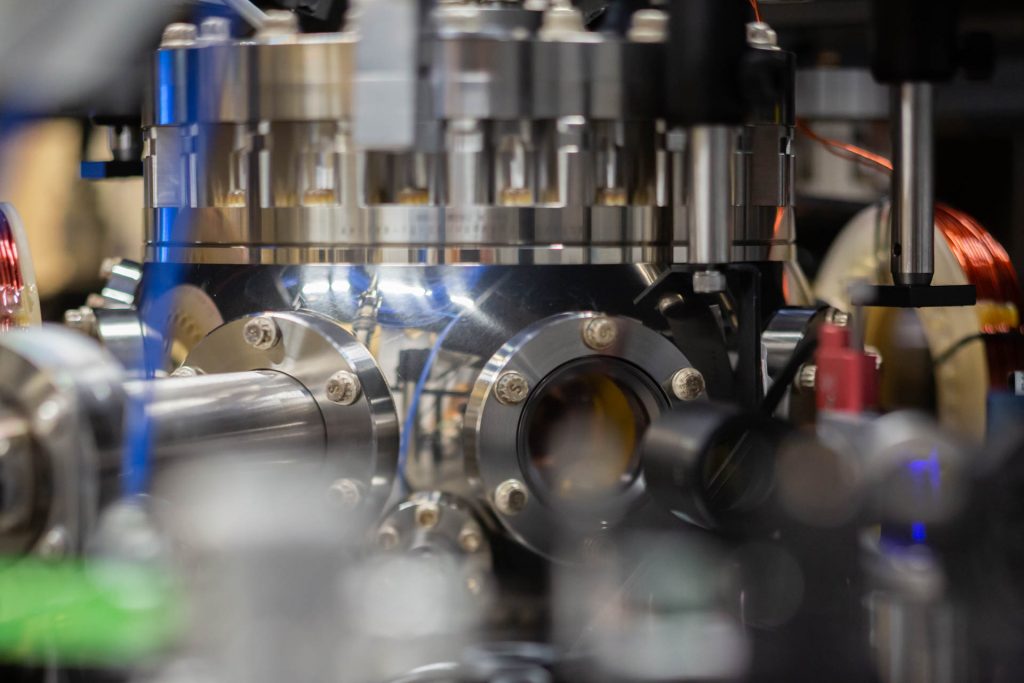Quantinuum unveiled a major upgrade to its System Model H1, expanding it from 12 to 20 fully-connected qubits and increasing the number of quantum operations that can be completed in parallel by its H1-1 quantum computer.
The company also said the upgraded system has undergone extensive testing by internal and external users to verify performance and functionality, including a private preview with JPMorgan Chase, which also today released a research paper on its use of the newly enhanced H1 system, demonstrating that rapid hardware and algorithmic progress is enabling the solution of “constrained-optimization” problems on quantum hardware (Constrained optimization computations being very common across business, finance and economics).
“With these upgrades, developers are able to run more complex calculations than they could before without sacrificing performance,” said Tony Uttley, Quantinuum’s president and chief operating officer, in a statement. “This upgrade is yet another example of our unique business model of continuously upgrading our systems, even after they are in commercial use, to provide the best performance to our users.”
The upgraded system got a big endorsement from the widely respected Marco Pistoia, Ph.D., Distinguished Engineer and Head of Quantum Computing and Communication Research at JPMorgan Chase.
“The quantum computing team at JPMorgan Chase has been using Quantinuum’s quantum computer to run experiments that use mid-circuit measurement and reuse and quantum conditional logic, taking advantage of the computer’s very high quantum volume,” he said, adding, “In our experiments, we used the 20 qubits of the H1-1 computer on a quantum Natural Language Processing algorithm for extractive text summarization. The results were almost identical to the reference values computed with a noiseless simulator, validating the computer’s high fidelity, as shown in our recent arXiv preprint. Thanks to this, the Quantinuum computer continues to be an essential resource for our research in quantum computing.”
The big bank’s encouraging comments and research paper are of tremendous market value, as JPMorgan Chase has been one of the most aggressive users of and investors in quantum computing in the early going.
Quantinuum said that while it increased system qubits, it simultaneously preserved H1-1’s low two-qubit gate errors (typical performance fidelities of 99.7 percent with fidelities as high as 99.8 percent) and critical features such as mid-circuit measurement, qubit reuse, quantum conditional logic and all-to-all connections. Increasing the number of gate zones from three to five also enables the H1-1 to complete more quantum operations simultaneously, and allows increased parallelization in circuit execution.
Uttley emphasized that the feat of increasing the qubit count and number of gate zones without compromising gate fidelity is an important step in Quantinuum’s system roadmap. The second version of the System Model H1, the H1-2, is scheduled to undergo similar upgrades later this year.
“These latest advances show that we understand what it takes to scale our trapped-ion quantum hardware and that we’re continuing to make the expected progress on our technology roadmap,” Uttley said. “We are adding qubits and maintaining fidelity without compromising any features, which is absolutely essential as we scale to our future H-Series generations.”
Quantinuum’s Quantum Origin cybersecurity offering, and InQuanto quantum computational chemistry software both were developed using the H1 system. Access to the H1 machines is offered with licenses to InQuanto software, and Quantinuum also provides commercial access to its trapped ion quantum computers H1-1 and H1-2, as well as the H1 Emulators through Microsoft’s Azure Quantum.
Speaking of Azure, it also welcomed news of the Quantinuum achievements. “The continuous upgrading of Quantinuum’s systems has been a great benefit to Microsoft customers,” said Fabrice Frachon, Azure Quantum Principal Program Manager.”Microsoft is pleased to offer the new capabilities of H1-1 with 20 qubits to customers who access Quantinuum H-systems through Microsoft Azure Quantum and our Azure Quantum Credits program, which provides free access to quantum hardware to customers.”
Dan O’Shea has covered telecommunications and related topics including semiconductors, sensors, retail systems, digital payments and quantum computing/technology for over 25 years.
Photo caption, credit: H1-1 system, Quantinuum
